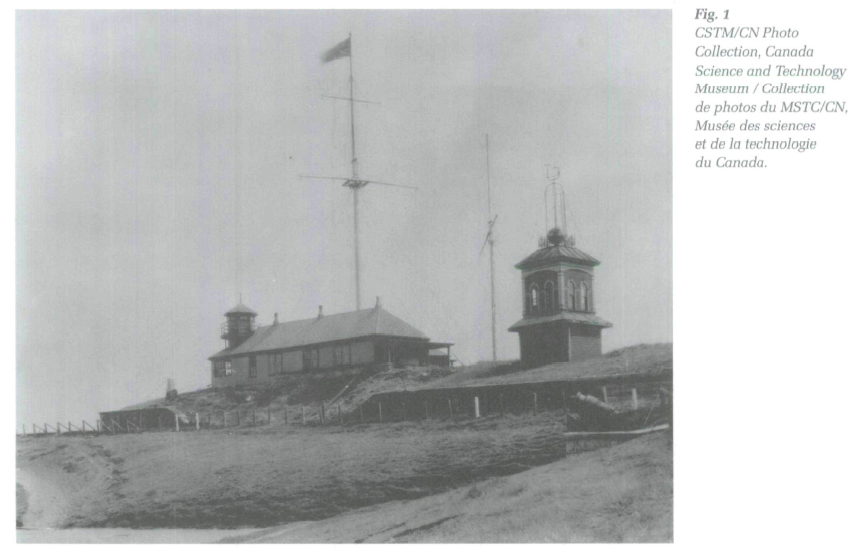Research Notes / Notes de recherche
A Canadian Time Ball
1 Time balls were part of a few Canadian harbours' skylines from the time the first one was established in Quebec in 1852.1 This was followed by another in Saint John, New Brunswick, in 1870. However, it was not until 1904 that one was built in Halifax, one of the busiest ports in Canada.
2 William Smith, deputy to the minister of the marine for Canada, indicated in an 1868 memo that his department intended to place a time ball on the Halifax Citadel.2 However, local interests (principally Robert Cogswell apparently) successfully argued against the need because of the "preciseness" of the time signals already being provided for firing the gun from the Citadel. The firing of the noon gun served the same purpose for navigators as dropping a time ball, though with slightly less precision.
 Display large image of Figure 1
Display large image of Figure 13 A Halifax jeweller, William Crawford, had, from about 1830, determined time astronomically using a transit telescope to rate marine chronometers, that is, to determine how fast or slow they ran.3 He was succeeded in 1864 by Robert Cogswell who was contracted by the nascent Meteorological Service of Canada to provide the signal to fire the noon gun from Citadel Hill. The signal was provided from his observatory above his premises on Barrington Street, across from the Grand Parade in front of City Hall and within eyesight of the Citadel.4 Following Cogswell's retirement in 1904 (probably not a coincidence with the completion of the time ball the same year), the time signal was apparently provided by his successor, Hedley V. McLeod, until at least the beginning of the First World War. McLeod ceased business in 1925.
4 The Halifax time ball was built on the southeast rampart of the Citadel. Shown in the down position, the ball was raised, as was standard practice, halfway up at five minutes to the hour and all the way up at one minute to noon. An electrical signal from the nearby observatory released the ball at noon precisely. The advance notice signalled by raising the ball and the clear, visible signal of the falling ball provided more precise chronometer ratings than with the gun. However, the tradition of the noon gun still survives in Halifax while the time ball was sadly removed from the Citadel sometime after 1959.5 The signal station to the left of the time ball in Figure 1 flew the flags of ships coming and going from the harbour as well as signalling storm warnings provided by the Meteorological Service of Canada. The signal station was removed in 1951 having been long made obsolete by radio. This photo is believed to have been taken about 1920.
5 This photo, and several others also showing the Halifax time ball, are just a few of the extraordinary photos in the CSTM/CN Photo Collection at the Canada Science and Technology Museum. Many more may be found at: www.science-tech.nmstc.ca.